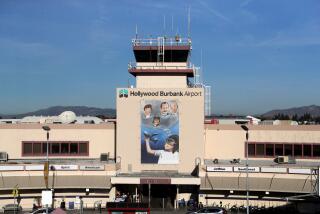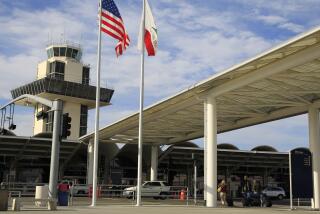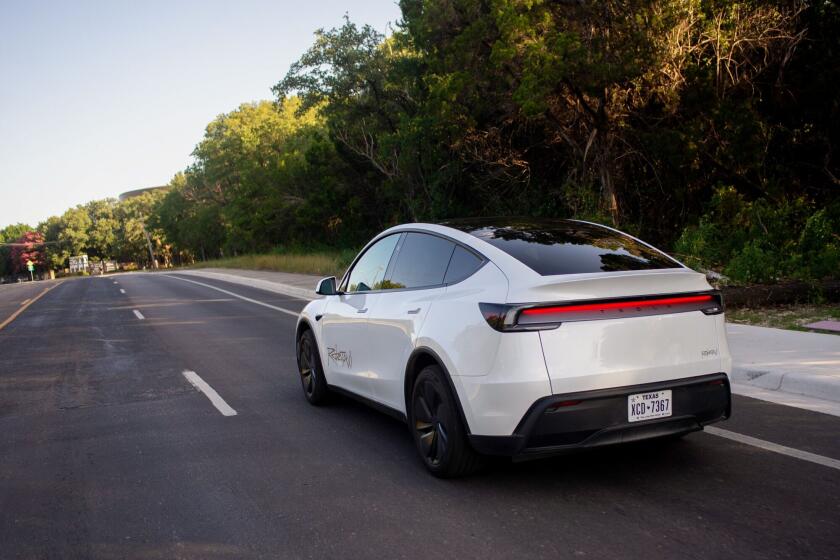Airline’s Exit Will Help Cut Noise at Burbank Airport
- Share via
Aircraft noise over the San Fernando Valley will drop significantly in a few weeks, partly because Republic Airlines plans to quit flying into Burbank Airport, officials said Monday.
Republic operates the largest number of noisy flights at Burbank. It will quit using the airport March 31 as part of what its officials called a reorganization of its routes.
Leland Ayers, vice president of the Burbank-Glendale-Pasadena Airport Authority, said the departure of Republic, as well as plans by other airlines to switch to new, quieter jetliners, will mean noticeable decreases in noise.
10% Reduction Goal
Ayers said the changes mean “a new type of aircraft is flying into Burbank.” He said the airport hopes to reduce the noise problem this year by at least 10%, as measured by the affected area on the ground.
Richard Vacar, an airport noise specialist, said Republic uses noisy DC-9 jetliners on 46 flights a week at Burbank, accounting for 37% of the noisiest jet takeoffs. He said Republic’s quitting the airport will have a “very significant effect.”
Vacar said the second-largest operator of noisy jets at the airport is Alaska Airlines, which has 39 departures weekly using Boeing 727-200s, the noisiest still in operation there.
Jim Johnson, vice president of communications for Alaska Airlines, said it expects to begin using a quieter MD-83 model at Burbank within a few weeks. But he said it may take two years to phase out all the noisier aircraft.
Lengthy Phase-Out Studied
Airport officials in December recommended that airlines be ordered to quit using all noisy jetliners at Burbank by January, 1986, rather than phase them out over four years, as current airport regulations permit. Several airlines objected, including Alaska, saying the proposal is not economically feasible. The authority is expected to act on the recommendation within a month.
Vacar said about 70% of all flights out of Burbank now use aircraft that meet federal noise standards. Besides Alaska and Republic, two carriers use some jetliners that exceed the standards. Pacific Southwest Airlines has 25 such flights a week; Continental Airlines, 14, Vacar said.
Ayers praised America West Airlines’ plan to replace noisy planes at Burbank by March 15 with the new Boeing 737-300.
Measuring Noise Impact
The airport measures its noise impact by the number of acres of residential property and other incompatible uses affected by excessive noise. Airport officials said the noise impact area has been reduced to 196 acres from almost 400 since the three cities bought the airport from the Lockheed Corp. in 1978.
Vacar said noise levels have decreased in the past two years--through the use of new aircraft--even though there were 6,000 more flights in 1984 than in 1983.
The airport had projected that the area affected by noise would be reduced to 190 acres this year. Ayers said the early introduction of new planes, as well as Republic’s departure, should reduce the number further, to about 170 acres.
However, Tom Paterson, spokesman for a coalition of six East Valley homeowner groups, again urged the airport authority on Monday to limit the growth of the airport. Homeowners maintain they are as affected by the frequency of planes flying overhead as they are by the amount of noise they make.
More to Read
Inside the business of entertainment
The Wide Shot brings you news, analysis and insights on everything from streaming wars to production — and what it all means for the future.
You may occasionally receive promotional content from the Los Angeles Times.










